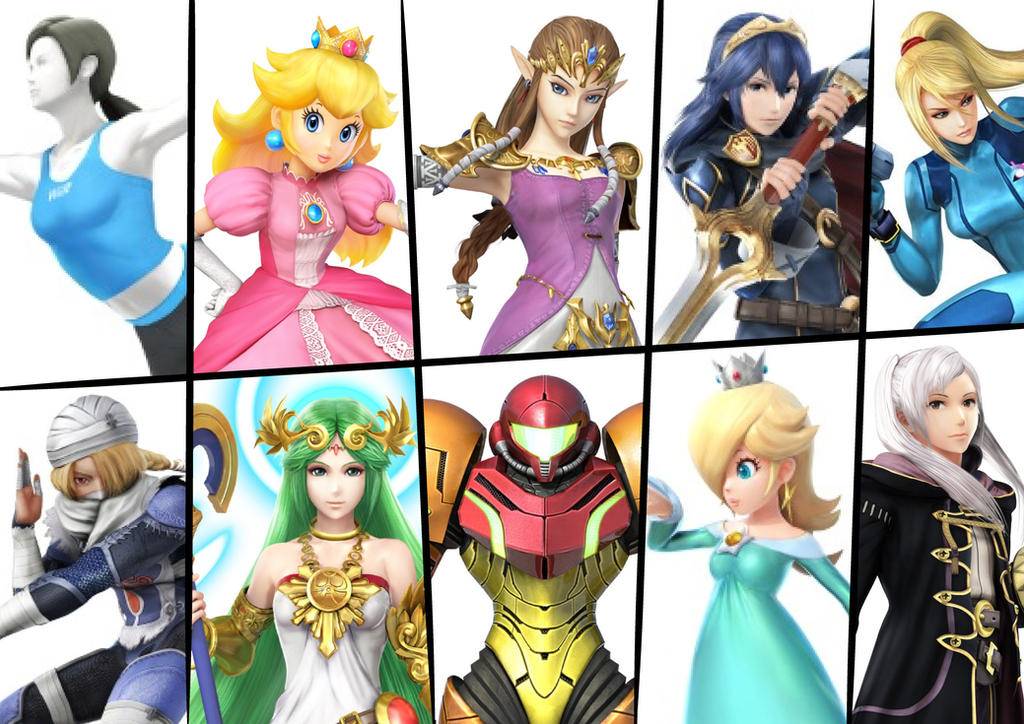Super Smash Bros. Ultimate (SSBU) is a widely popular fighting game that features characters from various franchises. For this week’s critical play, I chose to play SSBU with a focus on feminist critique, particularly by using the character Princess Peach. This analysis examines how the game intertwines with feminist theories and critiques its representation of gender.
Playing SSBU as a feminist involves analyzing character representation, gameplay mechanics, and narrative elements through the lens of feminist theory. While SSBU includes strong female characters, it often falls short in challenging traditional gender norms. By integrating feminist perspectives, the game could promote more inclusive and empowering representations.
Princess Peach, a central character in SSBU, exemplifies traditional femininity with her pink dress and high-pitched voice. However, her abilities—such as floating and powerful smash attacks—contrast with this dainty appearance, offering a subversion of the damsel-in-distress trope. This juxtaposition aligns with feminist theories that advocate for complex and multi-dimensional female characters.
Despite these strengths, SSBU’s roster remains predominantly male, and female characters are often sexualized or designed to fit stereotypical roles. For example, Bayonetta’s character design and moveset emphasize sexuality, which can overshadow her strengths as a fighter. This representation aligns with Shira Chess’s observation that video games often fail to fully embrace feminist potential, instead maintaining traditional gender dynamics.
SSBU’s mechanics do not inherently disadvantage female characters; however, the community’s culture sometimes perpetuates gender biases. For instance, female players often face harassment or are not taken as seriously as their male counterparts. This reflects broader issues within gaming culture, as highlighted by the discussions around GamerGate and toxicity in gaming spaces.
To address these issues, SSBU could incorporate more narrative elements that highlight diverse female experiences and challenge stereotypes. Additionally, Nintendo could foster a more inclusive community through targeted initiatives and support for female gamers.
While SSBU lacks a cohesive narrative, its crossover nature allows for the inclusion of diverse characters and stories. However, the game does not actively engage with themes of gender or identity, missing an opportunity to explore these Games like “Florence” and “Monument Valley 2” offer more nuanced portrayals of femininity and emotional labor, providing fresh spins on familiar tropes. By drawing inspiration from such titles, SSBU could enhance its representation of gender and identity.
Integrating ideas from the course, SSBU’s formal elements—such as character design and mechanics—could be analyzed using the MDA (Mechanics, Dynamics, Aesthetics) framework. This framework reveals how the game’s design choices impact player experience and societal perceptions. Additionally, concepts from Dan Cook’s “Loops and Arcs” could help in understanding how SSBU’s gameplay loops reinforce or challenge gender norms.
Shira Chess writes, “In a post-GamerGate world, it is difficult to consider video game culture and industry apart from the toxic forces that have deliberately pushed out feminine influences”. This highlights the pervasive issue of toxicity in gaming communities, which affects female gamers. Specific examples from SSBU’s gameplay and community culture, such as instances of harassment during online matches, reinforce the central argument.
How can video games like SSBU evolve to better represent diverse genders and identities, and what specific changes could we consider to achieve this goal?
Super Smash Bros. Ultimate has the potential to be a more inclusive and feminist-friendly game by rethinking its character designs, community culture, and thematic elements. By embracing feminist perspectives, SSBU can contribute to a more equitable and diverse gaming landscape.
- Target audience: General gaming community, students in game design.
- Name of the game: Super Smash Bros. Ultimate.
- Game’s creator: Masahiro Sakurai, Nintendo.
- Platform of the game: Nintendo Switch.



